Machaerus: A Palace-Fortress with Multiple Mikva’ot
032

I confess that what initially drew me to Machaerus was that it was where Salome danced before the tetrarch Herod (Antipas) at his birthday party—and where John the Baptist was beheaded (Matthew 14:1–12; Mark 6:17–29). What’s more, there was general agreement that this story was historical; that is, it actually happened. It was not simply a tradition.
Moreover, the site could hardly be more dramatic. Perched on a peak on the eastern shore of the Dead Sea, it held the impressive remains of Herod’s palace.
All this was the subject of my first article in BAR.a My second BAR article explored the principal of anastylosis at Machaerus.b Anastylosis refers to the restoration of an ancient structure using only the original architectural elements to the greatest extent possible. We were able to reconstruct two impressive columns—one Doric and one Ionic—of the original royal palace.
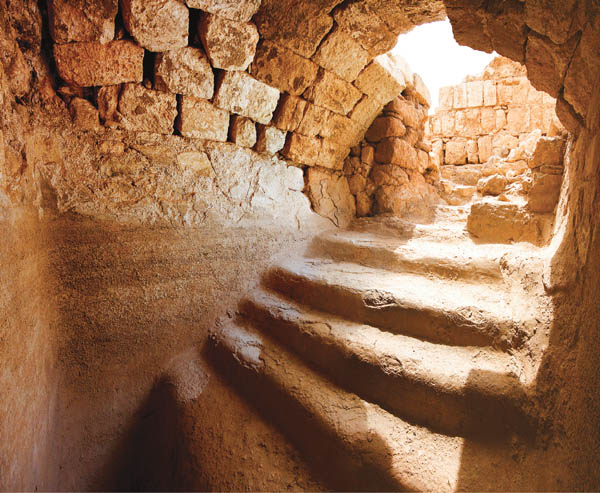
We have continued our archaeological excavations at Machaerus and are pleased to present to BAR readers a report on what may seem like a surprising subject in light of our two earlier reports. This report is devoted largely to mikva’ot, ritual baths (singular: mikveh).
In our second article, we recounted the archaeological history of Machaerus, as we were by no means the first archaeologists to study the site or excavate it. We will also refer here to some of this earlier work—in addition to reviewing the ritual baths at Machaerus (which will also take us to the lower city of Machaerus where John the Baptist was imprisoned).
033
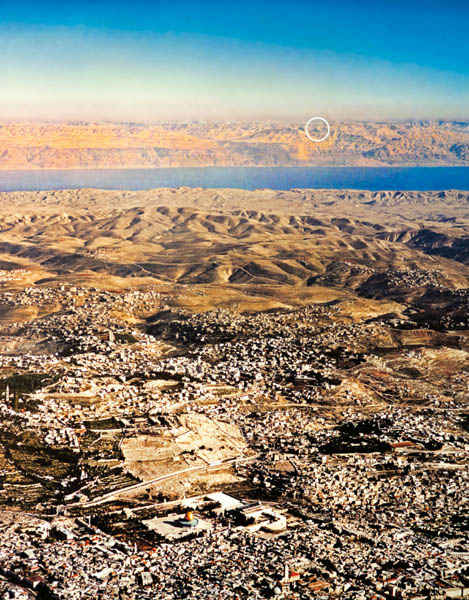
034

The first archaeological study of Machaerus was undertaken only in June 1968 by the American-Baptist Archaeological Mission, led by ordained 035Baptist minister E. Jerry Vardaman. Among much that they exposed was a wonderfully preserved mikveh outside the walls of the splendidly decorated royal bathhouse. It still had its wooden door intact and a segment-vaulted roof in perfect condition. The function of the mikveh was not hygienic, but ritual.

A mikveh is a bathing and immersion pool used for ritual purification in Judaism. The Hebrew Bible stipulates that bathing is required after certain events to become ritually pure again. For example, after recovering from leprosy, a person was to bathe (Leviticus 14:8–9). After coming into contact with a grave or with a dead person, it was necessary to bathe (Numbers 19:19). Men were to bathe fully in “living water” after having genital discharges before they are able to present an offering or sacrifice (Leviticus 15:13–15). They were also to bathe after emissions of semen (Leviticus 15:16).

In September 1979, the Franciscan Archaeological Mission, under the directorship of Virgilio Corbo OFM, completed the 1968 American-Baptist excavation of the royal bathhouse of Machaerus.
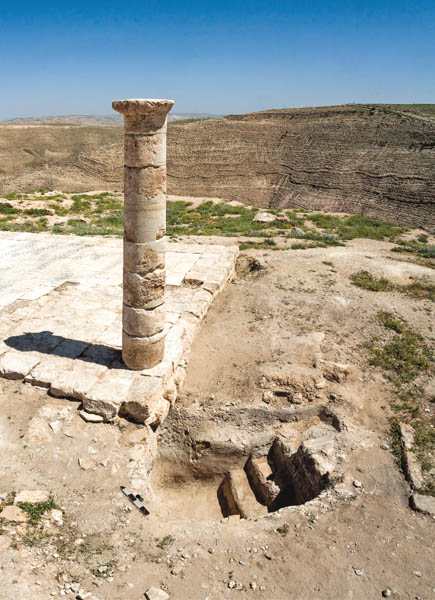
They also unearthed the beautiful mosaic floor of the tepidarium (the room with warm baths) of the bathhouse and excavated the connected frigidarium036037 (the large cold pool) as well, clearly with a non-ritual function.
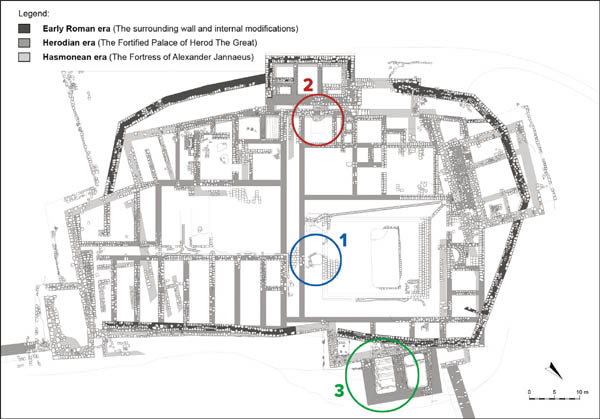
Similar to the American-Baptist mission, the Franciscans also discovered a mikveh in 1981. But this mikveh was outside the walls of the citadel—in the lower city of Machaerus.
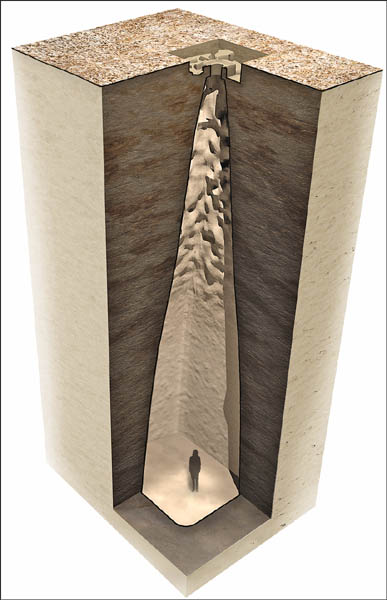
By July 2009, our Hungarian Archaeological Mission had begun working at the site. Among other things, it had re-erected one of the complete Ionic columns of the apodyterium (the primary hall of a Roman bathhouse, whose name is derived from the Greek apodyterion [άποδυτήριου], meaning the “undressing room”) in the royal bathhouse of Machaerus, on the exact place where Corbo’s excavations had discovered an Attic column base in situ. We were able to execute the theoretical architectural reconstruction of the complete bathhouse as well.
038

We also discovered and fully excavated a mikveh outside the royal bathhouse during our two-month-long season in the fall of 2016. Built for the palace and personal use of King Herod and his royal family—for his only palace outside modern Israel—it is the largest mikveh ever discovered in Jordan.
This mikveh had 12 intact steps. Its architectural features closely resemble several mikva’ot in Qumran (home of the Dead Sea Scrolls), which lies almost directly across the Dead Sea. It also has a reserve or storage pool from which water could flow into the main mikveh pool when it ran low.
This newly discovered mikveh, 10 feet under the royal courtyard, originally had a vaulted stone roof, the remains of which lay at the bottom of the 12-foot-deep mikveh. The upper stratum of the mikveh was in the destruction level of 71 C.E. by the Legio X Fretensis (Tenth Legion of the Sea Straits—also called the Tenth Roman Legion) under the command of Lucilius Bassus. Among the collapsed surrounding wall were four ballistic missiles and two large column drums.
We were also able to reconstruct the rainwater harvesting system of the citadel, which included a nearly 20-foot-deep cistern-reservoir, next to the royal mikveh, without steps.
The destruction by the Tenth Roman Legion in 71 C.E. marks the end of the ancient history of Machaerus. However, the Herodian construction of the royal palace in about 30 B.C.E. did not mark the beginning of royal Machaerus. The Herodian construction was built on the ruins of an earlier destruction, the ruins of the Hasmonean citadel of the high priest king Alexander Jannaeus, erected around 90 B.C.E.
During the Franciscan Mission’s 1981 excavation of the royal courtyard of Machaerus, they discovered a 039mikveh from the Hasmonean period that was filled up by the later Herodian builders and was hidden by the foundations for their new floor. Only 22 feet from this small mikveh, the Hungarian Mission discovered and fully excavated in 2010 a 51-foot-deep Hasmonean cistern, with a water capacity of almost 30,000 gallons.

We have here at the Machaerus hilltop an archaeological time capsule of a good century and a half—between c. 90 B.C.E. and 71 C.E. There are only three layers in it: the late Hellenistic (Hasmonean), the Herodian and the Early Roman periods. Each of these periods ended with a military destruction: (1) the Hasmonean royal fortress (erected c. 90 B.C.E.) was destroyed by the army of Gabinius in 57 B.C.E.; (2) the Herodian royal palace (erected c. 30 B.C.E.) was demolished by the armed forces of King Aretas IV Philopatris in 36 C.E.; and (3) the Roman garrison-fortress (erected by the Roman prefect of Judea after the death of King Herod Agrippa I in 44 C.E.) was taken by the Jewish Zealots in the First Jewish Revolt against Rome in 66 C.E. and later was ruined by the Tenth Roman Legion in 71 C.E. We may easily consider this an archaeological three-layer sandwich—a unique opportunity to study and understand this archaeological legacy in context.
Machaerus disappeared from the map in 71 C.E. During the Byzantine, Crusader and Ottoman periods, pilgrims did not know where this historical place could be found. Josephus, Eusebius and other important authors wrote that Machaerus is the historical place where John the Baptist was imprisoned and killed, but they could not identify its location on maps of the Holy Land!
On January 17, 1807, Ulrich Jasper Seetzen visited Transjordan and found a modest Muslim hamlet near the Dead Sea, called Mukawer. He made a guess, based on linguistic etymology, that the close-by surviving conical-form hilltop with some limited, but still visible, ruins could have been the lost Machaerus (meaning “sword” in Greek). However, it was only in 1965, when a compatriot of Seetzen, the German August Strobel, discovered by chance—in the sunlight of a late October afternoon—the 2.2-mile-long circumvallation siege wall around the hill, that ancient Machaerus was identified. A parallel siege wall can be found around Masada, and we know from ancient sources that the Tenth Roman Legion had only one circumvallation siege in Transjordan—at Machaerus. Strobel declared, basing himself on this siege monument of the Tenth Roman Legion, that in the epicenter of this circumvallation the ruins of ancient Machaerus would be revealed.
Strobel published his discovery in 1968. He was absolutely correct. Some months later, the American-Baptist Archaeological Mission under Vardaman unearthed the first walls, the mosaic and opus sectile 060decorated floors of the once magnificent Herodian royal palace.
In 1973, a German team under the supervision of August Strobel conducted a detailed survey at the site. Following this, two generations of Franciscan academics of the Studium Biblicum Franciscanum in Jerusalem, directed by Virgilio Corbo (1978–1981) and Michele Piccirillo (1992–1993), conducted excavations at Machaerus.
This has been followed since 2009 by the excavations, surveys and studies of the Hungarian Academy of Arts, led by the present author.
There is still much more to learn. The work will go on long after the Americans, the Germans, the French and Italian Fathers, and the Hungarians have all passed on.
Several mikva’ot (Jewish ritual baths) have been uncovered at Machaerus, the palace-fortress on the eastern shore of the Dead Sea where Salome danced and John the Baptist was beheaded. Archaeologist Győző Vörös takes readers on a journey through past and current archaeological excavations that have resulted in the discovery of these ritual baths.
You have already read your free article for this month. Please join the BAS Library or become an All Access member of BAS to gain full access to this article and so much more.
Already a library member? Log in here.
Institution user? Log in with your IP address or Username
Footnotes
Győző Vörös, “Machaerus: Where Salome Danced and John the Baptist Was Beheaded,” BAR, 38:05
Győző Vörös, “Anastylosis at Machaerus,” BAR, 41:01
